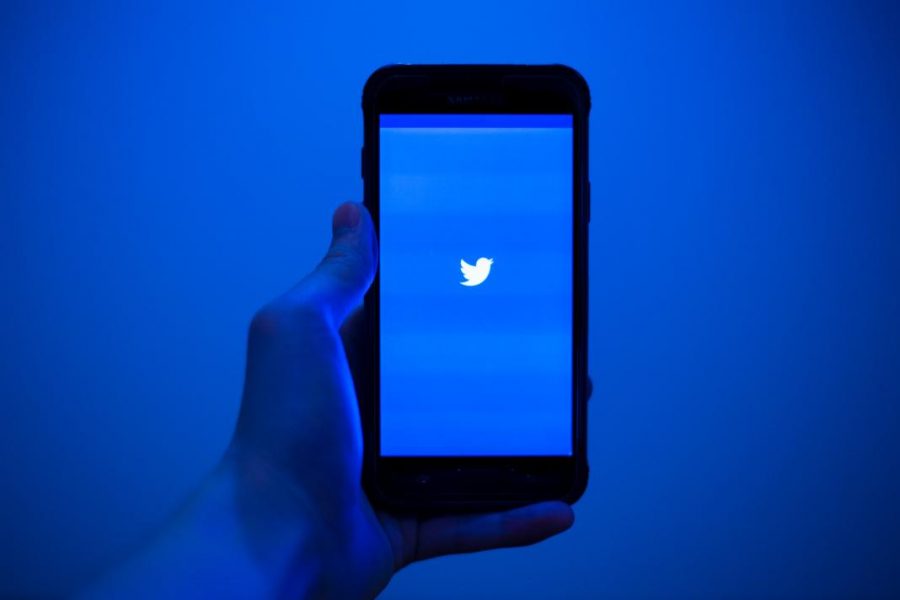Cushman: Missing Persons Alerts Should Be Broadcasted on Social Media
Social media pulled up on the phone on Wednesday, March 14, 2018. (Photo by Curtis Lin)
October 20, 2021
It’s 10:30 p.m. You’ve just climbed into bed when suddenly, your phone starts beeping loudly — it’s an Amber Alert. Most of us don’t take the time to click the link and learn more, and if we do, the information doesn’t always help. If it says the make and model of a car to look out for, I likely won’t recognize it because I don’t know what every type of car looks like. And the pictures of people released with an alert, if any, are poor quality.
While I never felt like an Amber Alert gave me enough information, I do know the faces of missing people from cases from social media. Using these platforms helps spread information about missing people easily and widely. Missing persons information supplied by law enforcement should be directly implemented into our feeds to better inform the public.
No Good Tools for an Important Job
The longer a missing persons case continues, the lower the chance of survival for the victim, especially for missing children. In 76% of child homicide cases, the victim died within three hours of abduction and in 88.5% of cases, the victim died within 24 hours. As time goes on, memories fade and evidence degrades, making the first 72 hours of a case even more critical to ensuring a safe return.
Still, few tools exist to properly alert the community when someone goes missing despite the need to act fast. In Utah, we have two kinds of missing person alerts. We use Amber Alerts for children 17 and younger who have been abducted, and we use Silver Alerts for adults over 60 with dementia. This leaves a gap for Utahns ages 18-59. And while an emergency alert system exists for missing adults, Utah doesn’t use it.
In June 2021, one Utah woman was found after being abducted because police had mistaken her small build for a child, and sent out an Amber Alert. That alert saved her life, but had police known she was actually 30 years old, she may not have survived.
Additionally, the community has to “opt in” to learn anything, which presents another major flaw with these alerts. Despite signing up for these alerts, I’ve had to look them up myself or click a link to find useful information.
When I see a Silver Alert on a freeway sign, I have to look it up and hunt down a picture of the missing person. When I receive an Amber Alert, I want to click the link, but sometimes I forget. These tools make the community search for the information themselves, meaning someone who does see something important might not know since they didn’t take the time to actually look up the alert.
The Flaws with Social Media
With the limitations of missing persons alerts, social media started playing a vital role in spreading important information about these cases. We’ve seen this most recently with Gabby Petito’s case, but other cases have been aided in part by social media.
When toddler Lana Lowther went missing in Ohio in February 2016, one man saw her face on social media and took a different route home just to look out for her, and found her crawling around in the snow. Local police said that his alertness after seeing a social media post about Lana likely saved her life.
However, misinformation runs rampant with missing persons coverage on social media. In Petito’s case, for example, countless theories of what happened to her appeared online, including rumors about Petito being pregnant. These were debunked by the release of her autopsy, but demonstrated the drawbacks of social media coverage.
While the spread of misinformation can sometimes be harmless, it can also get in the way of an investigation. Misinformation can lead to false tips that police waste their time investigating. It can also lead to public vigilance about the wrong things.
Social Media as an Alert System
Social media has the potential to help missing people come home or get answers for families’ missing loved ones — if we use it right. Today, 72% of Americans use some form of social media and on average, we spend about two hours a day engaging with it. If we logged on and saw the faces of missing people or vehicles we should look out for, we would all have more information to help.
Social media sites should create pathways for local law enforcement to reach out and spread information on missing people. Amber Alerts come through the radio and our cell phones. Social media has become an important part of life that we must start issuing missing persons information on our feeds as well.
This would allow our communities to not only see exactly what they should look for, but it would ensure the factuality of some information spread on social media. Law enforcement would verify posts and spread the most critical information they want the public to know
Americans care about missing people. It’s obvious from the way people have searched for answers for the Petito family. It’s obvious in the way one Ohio man took a different way home one day to look for a missing child. We just don’t have the information to actively help bring missing people home.
Social media sites have a responsibility to establish coordination with law enforcement to help solve missing persons cases. We have a way to fill in these gaps left by current alert systems, so let’s take advantage of them.








